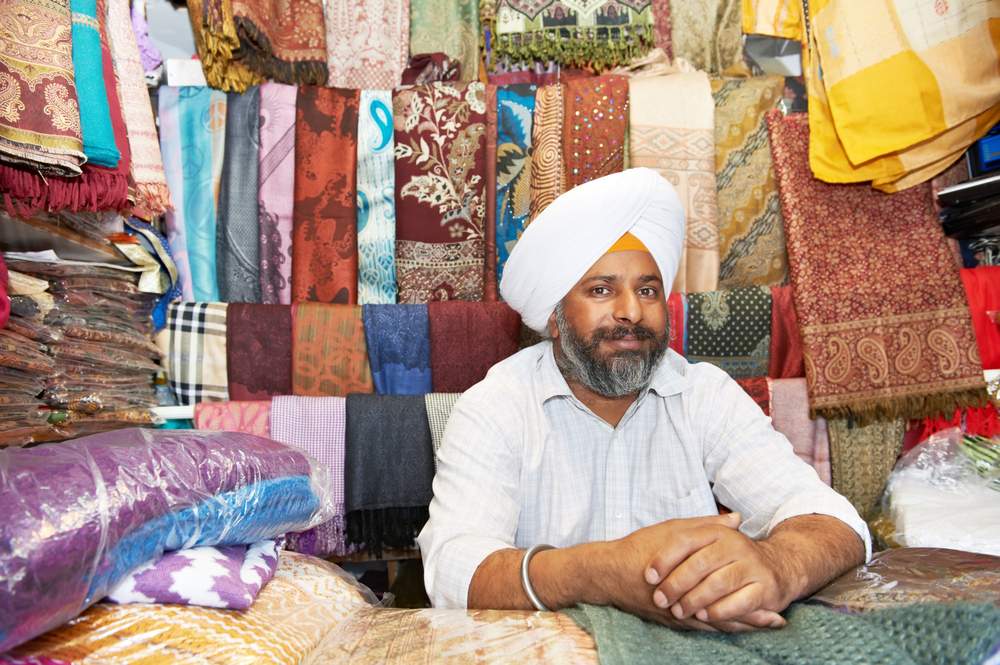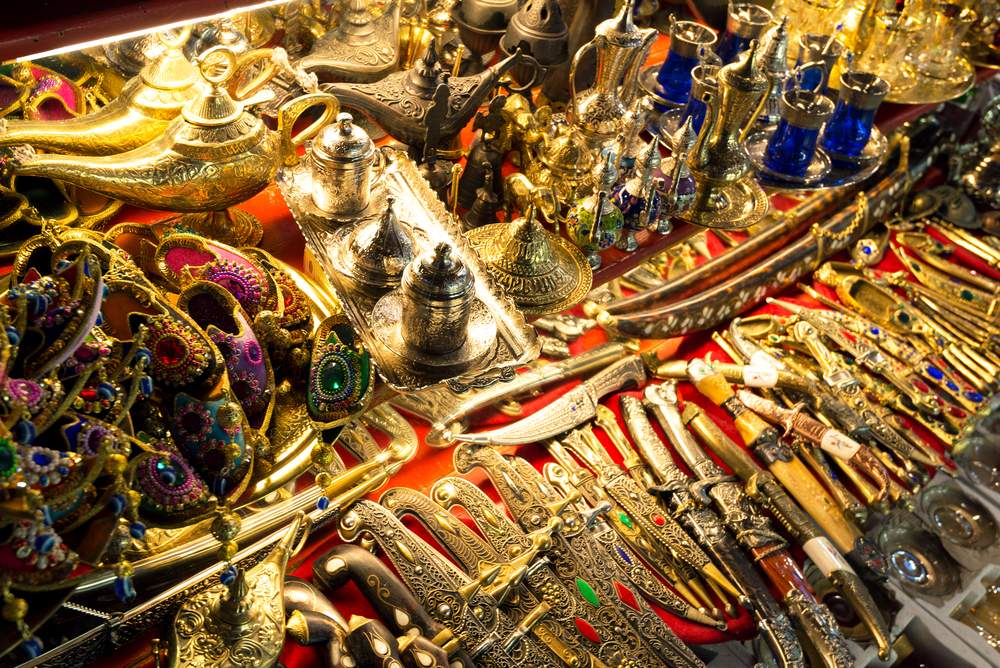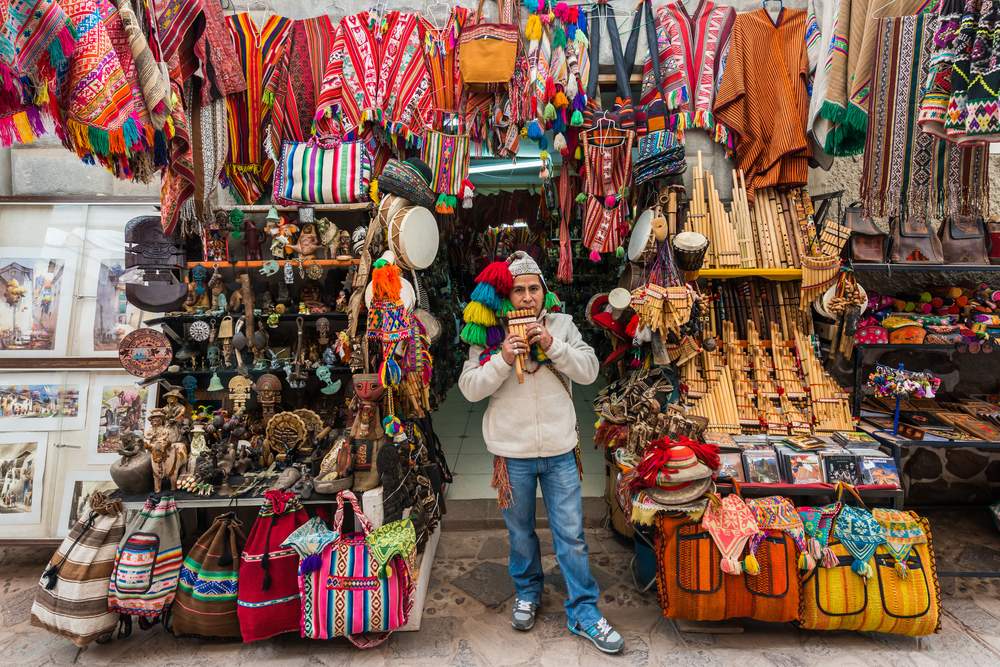Some people are born to negotiate while others detest the process. When you are traveling it’s quite likely that you’ll find yourself in a situation where you’d like to buy something, but the first price you are quoted is outrageous. In many parts of the world prices of nearly everything are flexible and dependent on how much the seller thinks they can get out of the buyer at that moment.
The most common rule of thumb in these places is to ask for a price and then offer half of that in return, but sometimes even half is way more than you’ll need to pay. It’s a game and the rules vary from one place to another. If you are happy paying twice as much as the next person for a souvenir, then fine, but if you want to know how to get the best price available the tips below should help.
#1. You Cannot Outsmart the Seller

Even those of us who think we are good at this game would be kidding ourselves if we thought we could actually outwit the salesman. It’s important to respect your opponent, for he or she probably does this 60+ hours a week, while you probably do it a few times each year at the most.
It’s very likely that a salesperson will congratulate you on your bargaining skills for driving the price down below his or her actual cost, but this is just to humor you and also probably to amuse his friends nearby. That $10 carving you just bought that he says cost him $11, really cost him $4 at the most, no matter what he says.
#2. Be Prepared to Walk Away (and do it)
Keeping in mind that about 99% of souvenirs are available in multiple places in the same small area, it’s extremely important that you are prepared to walk away if you don’t like the price. They might insist that this is the “final price” and that no one will ever offer this incredible deal again in the history of the planet, but somehow right after you thank them and start walking away the price will usually come down again, sometimes multiple times.
You have to be serious about this because they’ll easily sense that you are bluffing since they do this all day every day. It’s actually fun to walk away from a sale that isn’t going the way you’d hoped, and you’ll then have a good baseline for when you see that same item again a few minutes or a few hours later.
#3. Don’t Buy the First Time

This is sometimes hard to resist because the first time you see any given souvenir item it always looks so special, but after you’ve been around the block a few times (literally and figuratively) you’ll discover that identical item (often made by the exact same people) at almost every other shop in the area.
“If you want to get the best price on an item it’s very important to get a sense of the normal selling price before you enter the real hardcore negotiating phase.”
If you want to get the best price on an item it’s very important to get a sense of the normal selling price before you enter the real hardcore negotiating phase. A lovely wooden carving might sell for US$30 to one person, and US$12 for the next. The exact same item can be found three shops away, so if you ask for a price at the first shop you’ll find out which ballpark you are in, and you can use that information at the next shop, and then return to the first one if you think you can get an even better deal.
#4. You Cannot Resell it for Profit
This happens most famously with carpets in North Africa, Turkey, and the Middle East, but there are many other products like statues, vases, and jewelry, where a seller will come right out and guarantee that you can ship or carry the item home and easily sell it for a profit. They’ll tell you that you can actually pay for your whole trip by buying and reselling a few of them, but don’t ever believe it. Not only is this a common story from those bold enough to admit they were hustled in this way, but it also just doesn’t make any sense that you could pull this off.
If an opal or Persian rug can be sold at a profit for US$600 in one country, and that same item has a wholesale price of US$1,000 in your home country, then why would these people need you as a middleman to split the profit with? Even with shipping and duties, they could make way more money by sending the thing in bulk directly to your home country. Their sales pitch might sound solid, but buying anything for resale at home is a sucker’s game… no matter how much free tea they ply you with!
#5. Never Make an Offer You Won’t Honor
This isn’t really a bargaining tip, but more a rule of the ethics of this game. If you get into a negotiation with a vendor where you are going back and forth with prices, it’s extremely bad form to have them accept a price that came out of your mouth and then walk away without buying it. Almost anything else is acceptable within this process because either party always has the option of saying no, but once the seller says yes to your offer then you are committed. The lesson here is don’t negotiate for any item you aren’t ready to buy. You can always ask for a price, just don’t make counter offers unless you are prepared to pay that amount right then.
#6. Make Your First Offer Low

This one is pretty obvious to most of us, but most of these sellers are well aware of the universal fact that whomever makes the first offer is at a disadvantage. It’s annoying but very common that you’ll ask, “How much does this item cost?” and they will reply with, “How much will you give me for it?” You also have to remember the rule here about never making an offer that you aren’t willing to honor, so your best strategy in this situation is to offer something comically low.
If it’s a hand-carved chess set that you think you might be able to get for US$20, offer them US$5 or even less, assuming you’d be willing to buy it for that price. Chances are they will pretend to be insulted for about two seconds, and then come back with their own inflated starting price. Don’t worry about forcing them to pretend to be insulted. It’s part of the elaborate game, and a perfectly acceptable strategy.
#7. “Reasonable Prices” Translates: Rip Off
A sign saying “reasonable prices” means it’s a rip off, (so does an air-conditioned store while on a day tour). Package tourists in particular will face this dilemma, but it can and will happen to everyone who takes any kind of tour, or even any taxi ride in some places. You’ll be on a surprisingly cheap bus tour of local sights, and before you know it the bus will be parking at a “craft-making shop” of some kind.
This happens even in European cities, and the tours themselves really can be great deals if you don’t fall for this scam. After a short demonstration on how this local craft item is made, you’ll find yourself in an air-conditioned showroom filled to the rafters with that very item. These places often have fixed prices, so bargaining is impossible, and the fixed price is often double or more what you’d pay for the exact same thing at a stall a block or two away.
“The driver will usually get a commission just for bringing you in, whether you buy anything or not.”
In places like India and Southeast Asia, you can sometimes get in a taxi, tuk tuk, or hire a private car and driver, and you can get a lower fare if you allow the driver to take you by one of these special tourist stores. The driver will usually get a commission just for bringing you in, whether you buy anything or not. When you notice that instead of your destination you are mysteriously pulling up in front of a posh store, it’s a good idea to ask the driver what his arrangement is. If you know how to work this in advance, it can work out for everyone but the shopkeeper. I’ve had many absolutely free rides in this region just by allowing myself a short visit to a shop along the way. Never buy anything at these shops though, because the prices are terribly inflated by this very arrangement.
“Everything is negotiable. Whether or not the negotiation is easy is another thing. -Carrie Fisher”
#8. Don’t Overpay as Charity
If you want to give money away then that’s your business, but chances are that there are people in this location who need it far more than a crafty souvenir merchant. Overpaying for a souvenir is probably one of the least efficient ways of helping the locals, so make sure you are doing it for good reasons if you are tempted to do this at all.
On the other hand, if you are buying something from a vendor on foot, they might benefit from your generosity. This can be a tough call, but don’t ever fall for a sob story from someone who is delivering it in the midst of a price negotiation.
#9. Keep Things in Perspective
Otherwise known as: “Don’t be an asshole!” Especially when you are dealing in a foreign currency whose value is much lower than the one from your home country, it’s very easy to get carried away and lose your perspective. I remember once negotiating for 2 sarongs in Bali, and right after we stuck a deal and I was ready to pay she began insisting on 1,000 rupiah more for each sarong (something like 11,000 instead of 10,000 for each).
I became infuriated and we literally got into a screaming match for five minutes or so. I hated the idea of being gouged after the deal was set, and it was quite a while later that it occurred to me that 1,000 rupiahs equaled about 12 US cents, at the time. This isn’t to say it’s fine to allow yourself to get ripped off in these transactions, but it is good to keep track of the amount of money you are bargaining over.
#10. Think Twice
In a very unscientific survey of my own experiences and those of people I know well, I’d estimate that well over half the cheap souvenirs people buy on trips never see the light of day again, at least until they turn up at your garage sale several years down the road. I recently opened an old duffle bag I haven’t used in a few years, only to find a few small decorator pieces I bargained hard for while in India. They hadn’t seen the sun since they almost got me arrested for bringing undeclared wood items into Australia. That 6-inch wooden Ganesh carving looked really fun and exotic on the seller’s table, but it would look silly anywhere in my house. The point is, it’s probably better to buy fewer things that you’ll actually use than a bunch of cheap things that you won’t.
#11. Watch Others Bargain

In some cities and countries the game is played one way, and in some similar cities and countries the game is played with different rules. Hard bargaining might be more socially acceptable in some countries than in others. If you are interested in purchasing something you have your heart set on, it’s a good idea to at least have an idea of the range of price swings. If someone in Thailand says an item’s starting price is US$20, then chances are you can get it for US$10 or even less. But in Cusco, Peru if someone says something is US$20 you might be lucky to get it for US$18. You’ll get a feel for it quickly, but it can be shocking at first when a merchant screams at you for suggesting even a 20% discount.
#12. Keep a Sense of Humor
This whole bargaining thing is a major part of the culture in many areas, especially in parts of Central Asia. You might think this negotiating dance is something they reserve to get as much as they can out of rich tourists, but in some regions they literally bargain for their daily purchases with each other. It’s a ritual that can be aggravating if you aren’t fond of negotiating, and some people would much prefer if they were just quoted a reasonable price right up front. It’s important to remember that while this process might seem adversarial as you are doing it, this is just the way they do things, and you should never walk away from a sale or failed negotiation with any hard feelings.



